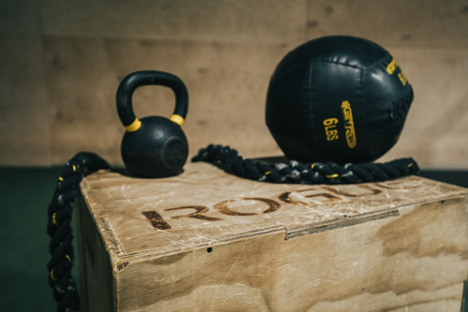Injury and Rehab Confusion
There are a lot of misconceptions and confusion that come with rehab and recovering from an injury. Some common questions we have pop up or know people are wondering are: why am I having to do exercises at home? Can’t you just “fix” me with your treatments at your office? Why I am doing these low-grade rehab exercises at the beginning? Why am I continuing to come and progress with exercises if I am out of pain? These are just to name a few, and we will try to answer each as best we can.
Why am I having to do exercises at home? Can’t you just “fix” me with your treatments at your office?
1. The best way to answer this is to ask, how does a person lose weight or build muscle? Through training. Rehab and getting out of pain are no different. We are training you to become more conditioned and build you back up and hopefully better than you were before. Just like with losing weight or building muscle, that takes effort. Yes, we spend a lot of time in the appointment doing exercises to help and rebuild, but there is an enormous amount of time a patient spends outside the treatment room. In order to properly rebuild and heal we have to challenge that tissue gradually outside the treatment room. This is also building patient self-efficacy and empowering them that they can heal themselves with the right guidance.
2. A big thing we harp on at ICT Muscle & Joint is patient education. We want people to know what’s going on with their condition, why other interventions have failed in the past, a plan going forward to heal, and reassure that they are in the right place or we will find the right place for them if proper results are not happening. One thing to understand is that we do not “fix” people. We are more of a “healing guide”. We love and regularly use things like adjustments, dry needling, IASTM, ART, and cupping to help speed up the process and reduce pain, but in reality this just opens the window for us to be able to use exercise to challenge and heal the tissue. We are just the guide in the process of pain relief and performing better.
Why am I doing these low-grade rehab exercises at the beginning?
1. This all comes down to strain level. A very recent injury or highly deconditioned tissue is not going to be able to handle much strain or load on it in the beginning. In office you will often see us draw a bell curve in order to illustrate the point that we want to load and challenge the tissue just enough to make it heal and feel better, but if we do too much, too fast then we can make things worse and go on the downside of the curve. This causes too much strain and the healing process starts all over again. You would not train for a marathon by running 26 miles on day 1. It is a gradual progression and rehab is the exact same way. We must find the amount of strain that you can handle safely with rehab and exercise and then progress from there until we reach your goal.
2. Another big thing to understand is that rehab is just a regression from normal training. It is taking a movement pattern and breaking it down until we can find the hardest thing that the patient can do well and pain-free. We can then build up and progress from there until your “rehab” just looks like a normal gym exercise. In the beginning, this may just be a pain-relieving exercise depending on the case and then we slowly progress toward more performance exercises.
Why am I continuing to come and progress with exercises if I am out of pain?
1. We liken this to an elevator analogy. Let’s say you are hypothetically an elevator with 1500-pound capacity. You break down (injury) and now you have lowered your capacity to 500 pounds. We build you back up and get you back to regular 1500-pound capacity, but the problem is this the capacity you broke down at before. We want to build on top of that capacity and go to 2000-pound capacity so that you are stronger and more resilient to breaking down. We want to make you better than before and resistant to the injury coming back. So, if you came into us for injury and pain due to squatting, the treatment plan would not stop when you are out of pain. It would stop when you have the proper mobility, stability, overall movement pattern, and strength to go back into squatting and be more resilient to injury.
About the author
When it comes to mechanical pain, Dr. Tyler Panko has seen the best outcomes produced when chiropractic, physical therapy, strength and conditioning, and soft tissue techniques and principles are combined into an individualized plan for the patient. His purpose and passion are to educate and help all people, ranging from acute to chronic pain, professional athlete to daily worker, and young child to elderly, go from pain to increased performance in their daily lives doing the things they love. His belief is that life is an athletic event, and everybody has the right to move and feel great well into old age.
